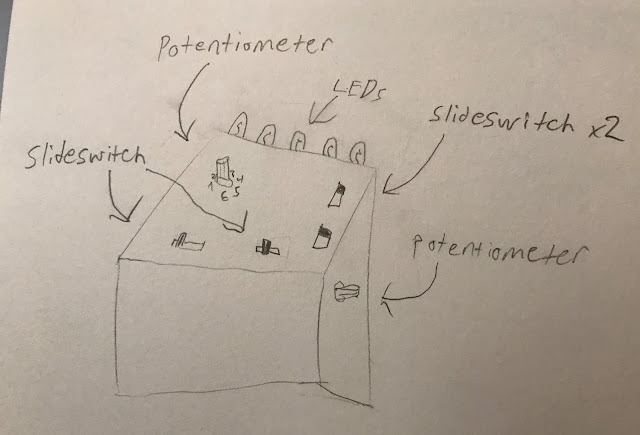Game Controller Concepts
David Perez
My concept for the game controller project is a controller which would be used to control Five Nights at Freddy's 2. The game is traditionally controlled with the mouse using pointer controls and click. There is also a single button dedicated to activating a flashlight. I wholeheartedly believe that the game could be very successfully controlled better with an custom alternative than what the game currently uses.
The game has game arcade style to it with lots of arcade cabinets and machines around, so my idea is to build a controller which would replicate the interface of an arcade cabinet or a music box design (there is a music box in the game that is very important to monitor) and provide alternative controls focusing around the use of switches and dials.
Five Nights at Freddy's 2 is a game that demands fast reactions and thinking from the player, so using switches is the most efficient way to implement quick control to the player (without the use of any buttons that is). If the concept plays out as well as I think it can, then it would be possible for a player using this style of controller to be as efficient or even better than a player using mouse and keyboard.
Link to the game via Steam: Five Nights at Freddy's 2
Concern with this concept: I need to be able to map points to a screen using a potentiometer OR I need to have the mouse's position reset each time the potentiometer's value is changed. If I need to do that, I need to have a value that would save the mouse's position for the purpose I would require. What I absolutely cannot have is painful and awkward Etch-a-sketch controls with my potentiometers.
Each model below is based off the same basic design but with slightly different control styles. In truth, I'm invested only in the first concept but mostly because I think it will provide the best play experience.



No comments:
Post a Comment
Note: Only a member of this blog may post a comment.